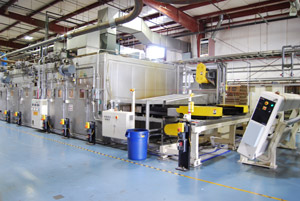

April 20 2022

When considering whether to conduct product/process development trials in an independent facility like our Biax Lab, initially customers often are caught off guard by the cost for that external capability. After running their trials here, however, they realize that there is tremendous value in working in a facility dedicated to such R&D efforts, and many become long term partners in ongoing product development initiatives.
In the development cycle for new film and sheet products, there comes a point where production processes need to be explored, samples need to be manufactured for properties testing and market development, and refinements in formulation need to be perfected. Researchers typically have one of two choices to accomplish this; schedule time on a production asset to run the experiments or run on a dedicated pilot line, whether company owned or independent.
Often the first and most obvious choice is to run on a production asset. Assuming capacity exists – which may not be the case – this can seem like a cost-effective solution as there are no outside fees to use the equipment, production operators can be used to run the trials, scale-up of a successful trial is automatic, and travel expenses are possibly avoided. However, there are some obvious (and other less obvious) downsides to running trials on a production line.
First, the throughput of a production line can be at least an order of magnitude greater than that of a pilot line. Given this, material cost alone can justify the expense of running on a dedicated pilot line. Take this example into consideration:
Let’s assume that the polymer resin costs $1 per pound. A pilot line running at 100 pounds per hour will nominally use $800 of material per day over the duration of the trial. Running the same trial on a production line running at 2,500 pounds per hour, would use $20,000 of material per day, and that doesn’t factor in any higher-cost minor ingredients/additives which would only tip the scales further against the production line option. Considering that a biaxial orientation production line could be running at throughput of three or four times that amount, the cost of running trials on a dedicated pilot line should seem like a bargain.
The savings on material cost alone should be enough to realize the benefits of using a dedicated pilot line rather than a production line with some open time. However, there are additional considerations to be taken into account, such as benefiting from the experience of pilot line technicians and the added versatility that an OEM pilot line can provide. Learn more about these topics in the upcoming follow-up article.